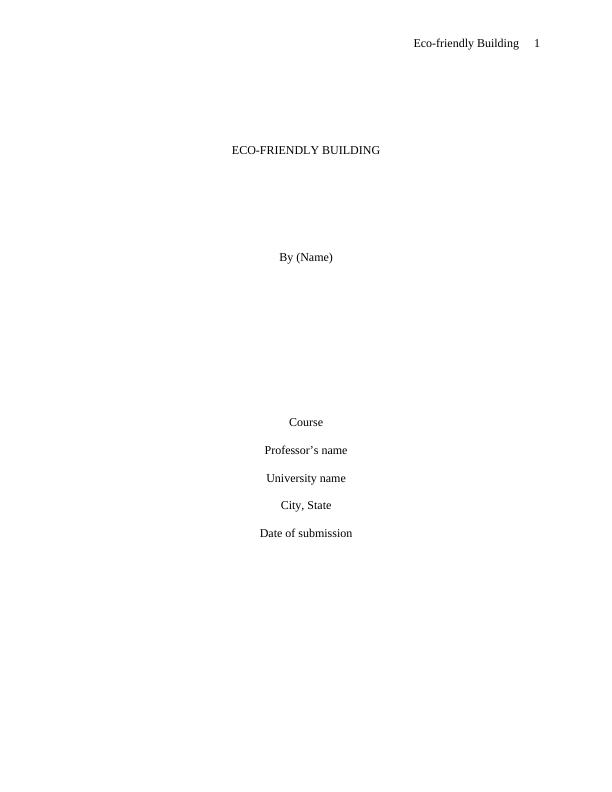Eco-friendly Building: Design, Materials, and Performance
Critically analyze the system design process of a project, focusing on the preliminary design and detailed design phases, system test, evaluation, validation, and optimization processes.
15 Pages3046 Words399 Views
Added on 2023-06-03
About This Document
This paper highlights the different phases of eco-friendly building design, emphasizing sustainability measures and building performance. It covers preliminary and detailed design stages, structural material options, and system testing and optimization processes. The evaluation includes post-occupancy evaluation and data envelopment analysis.
Eco-friendly Building: Design, Materials, and Performance
Critically analyze the system design process of a project, focusing on the preliminary design and detailed design phases, system test, evaluation, validation, and optimization processes.
Added on 2023-06-03
ShareRelated Documents
End of preview
Want to access all the pages? Upload your documents or become a member.
Report on Investigating Aspects of Green Building Projects
|13
|3379
|37
Environmentally Friendly Building System
|17
|4446
|73
Sustainable Food Delivery: Solutions for Uber Eats
|19
|923
|46
Sustainable Technologies for Building and Infrastructure
|8
|1977
|251
Report on Designing of Light Railway Network
|15
|3858
|51
Role of Eco-Friendly Initiatives on Consumer Decision Making in Hospitality: A Case Study on Hilton
|22
|5378
|21




